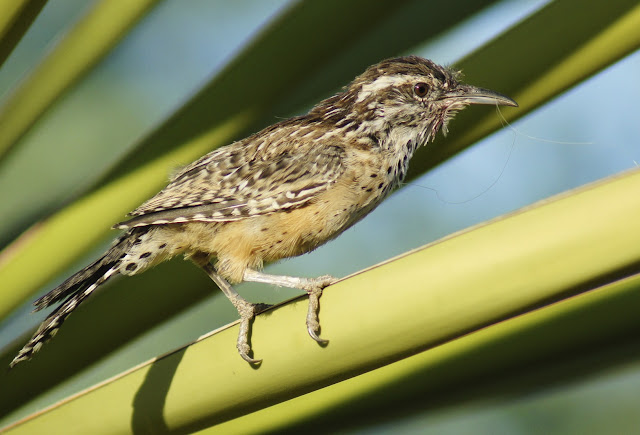The Cactus Wrens do very well in Arizona, and are especially noticeable at the wildlife preserves around the valley. They are very comfortable with people and semi-manufactured environments, so it's nice to get pictures of them in a more natural and aesthetically pleasing habitat.
These purple flowers made for a pretty great setting with the evening light.
I like here how the cactus works to supply a textured green background, quite nice with the cactus wren...
This busy bird was adding to her nest in a yucca plant. It was already looking pretty large and lopsided, but wrens do like to keep busy.
Here, the iconic wren of Arizona greets the morning sun, while another bears the evidence of a cactus-fruit breakfast.
 |
| A little bit of bed-head |
This specimen's darker brown back and head have not filled in yet, which makes me think it's a first year.
 |











